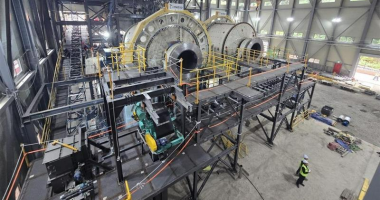- Additive manufacturing, also known as 3D printing, has significant potential to revolutionise the medical implants manufacturing sector
- Precise, patient-specific medical implants improve patient comfort and enhance the capabilities of medical practitioners
- On the ASX, Singular Health Group’s (SHG) Scan to Surgery initiative streamlines the process from medical imaging to medical implants
- Thanks to some savvy acquisitions and investments, Singular Health offers exposure to some potentially lucrative markets and important technology
- Shares in Singular Health Group last traded at 28 cents each in a manageable $28 million market cap
Additive manufacturing, one of the technical marvels of the 21st century, refers to the creation of extremely complex three-dimensional shapes by adding layer upon layer of material in an additive process.
It’s better known as 3D printing.
Essentially, 3D printers can replicate a digital model to precise proportions in real life and often using a range of materials.
While 3D printing has been around since the 1980s, the industry has picked up significant steam over the past decade thanks to technological advancements allowing for precise metal printing, making the tech easier to use and the final products cheaper to make.
The technology is increasingly used in engineering and construction industries, with complex parts able to be printed using durable materials, but only a handful of companies around the globe have noticed the potential this revolutionary tech carries in the medical industry.
On the ASX, Singular Health Group (SHG) is one such company.
A marriage of material markets
Integrating 3D printing into the medical implants manufacturing sector merges two lucrative markets each set to be worth billions of dollars over the next several years.
Market researcher Grand View Research forecasts the general 3D printing market to reach almost US$63 billion (A$85 billion) by 2028.
While large portions of this market will be dedicated to niche 3D-printed products, Grand View said growing demand for orthopaedic procedures, dental implants, and prosthetics — as well as ongoing developments in the additive manufacturing technological space — will make 3D printing particularly valuable in the medical industry.
As such, additive manufacturing in the health care market alone is expected to be worth $6.4 billion by 2028.
According to the European patent office, patents relating to 3D printing have been increasing by 36 per cent per year — a testament to the buzz around this tech.
But for the health care industry, it’s about more than just the ability to manufacture products quicker and cheaper; the precise patient-specific approach that additive manufacturing brings to the medical implant industry is revolutionary for patients and doctors.
It’s all in the detail
Yes, additive manufacturing brings the same benefits to the medical industry as it does to construction and engineering as far as development speed and costs go — and this is certainly exciting in itself.
However, the ability to produce parts with complex geometry is one of the most important benefits of this type of tech.
Without 3D printing, there is a limit to the level of customisation an implant can have; be it dental or cardiovascular or prosthetic, it’s typically tough to tailor an implant to the specific needs of an individual patient.
Additive manufacturing circumvents this by providing health practitioners with the ability to create intricate and unique designs that wouldn’t be plausible any other way.
Further, the range of materials from which an implant can be made expands with 3D printing, too — adding more customisation capabilities and, ultimately, greater patient comfort.
Rather than having to adapt to a generic implant that feels foreign in the body, 3D printing gives patients access to unique and precise implants tailor-made for their bodies.
The result is quicker implant times, improved build and safety of the implant, and less time in the operating room as surgeons and physicians pre-fit medical equipment to exact dimensions.
Singular Health Group has a hand in this entire process with its Scan to Surgery initiative, which streamlines the whole operation from medical imaging to medical implants.
Singular Health and Australian Additive Engineering
The Scan to Surgery process kicks off with a medical scan, which hospitals and medical practitioners can store in Picture Archiving and Communication Systems (PACS) using their own existing infrastructure.
These scans can then be turned into accurate virtual 3D models using SHG’s Volumetric Rendering Platform and artificial intelligence (AI)-driven technology. The 3D versions of scans can also be stored in a PACS server for easy access later in time.
Thanks to SHG’s savvy acquisition of Virtual Surgical Planning (VSP), these virtual models can be visualised, manipulated, and modified through either a standard computer setup or through virtual reality.
Practitioners can design and edit medical implants in the virtual world made specifically for the accurate 3D model — all through SHG, meaning there’s no need for outsourcing.
When SHG bought a 25 per cent stake in Australian 3D printing specialist Australian Additive Engineering (AAE) back in March, it took the final crucial step to realising its Scan to Surgery initiative.
Thanks to SHG’s investment, AAE has become the first additive manufacturing business in Australia dedicated to making medical-grade implants.
AAE is leasing polymer and titanium 3D printers to create tailor-made medical implants for Australian hospitals and specialists.
Crucially, AAE is based in Melbourne. This means not only will all products made by AAE adhere to Australian medical regulatory standards, but medical experts no longer need to look offshore for precise custom implants.
Singular Health, through its investment in AAE, makes this technology far more accessible to Australia’s medical industry.
AAE Managing Director Hugh Tevelein said without the SHG investment, AAE “wouldn’t be a major player in the additive manufacturing community”.
“While there is a growing market for contract manufactured medical devices in Australia, there is also a large setup cost, and there is no way it would have been possible without Singular Health,” Mr Tevelein said.
“[The investment] has provided us with the opportunity to be fully set up and ready to manufacture larger orders without wasting time to slowly grow our own capital.”
For Australian investors, SHG and AAE offer exposure to a potentially lucrative market that could change the world of medical imaging as we know it.
Shares in Singular Health Group last traded at 28 cents each in a manageable $28 million market cap.






